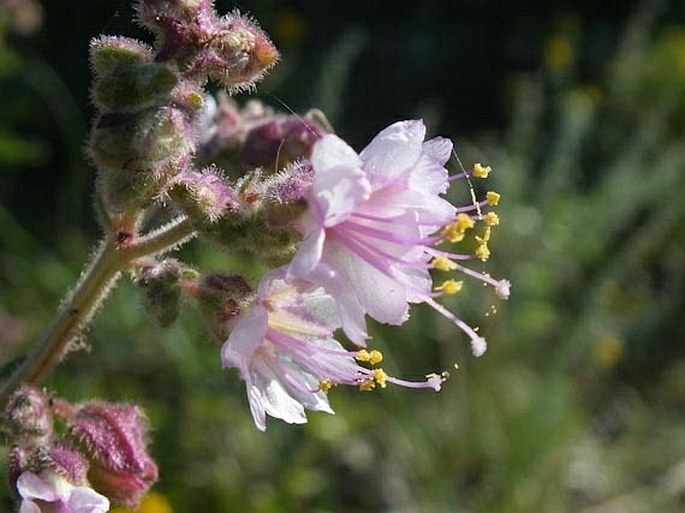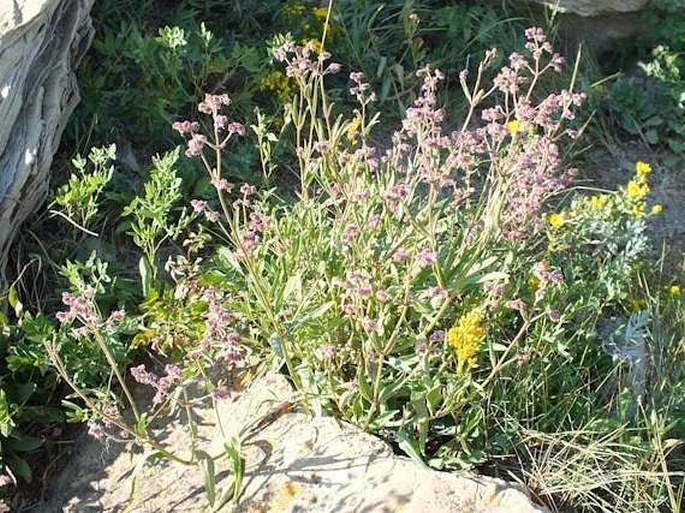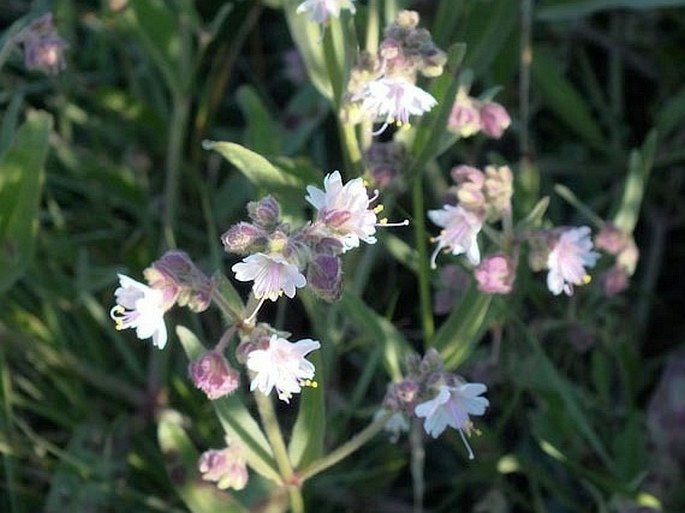Syn.: Allionia linearis Pursh, Mirabilis hirsuta var. linearis (Pursh) B. Boivin, Oxybaphus linearis (Pursh) B. L. Rob., Oxybaphus angustifolius var. linearis (Pursh) Choisy
Family: Nyctaginaceae Juss.

Distribution: West of USA (found in prairie and valleys of Rocky Mountains), reaches into southern Alberta and Saskatchewan and northern Mexico (Chihuahua, Coahuila, Durango, San Luis Potosi). In the range it occurs in 3 varieties.
Ecology: Grows in prairie, in sandy and rocky soil, dry grassland and clearings of oak and pine forests, in elevations 200–2700 m. Blooms from late spring to late summer.

Description: Perennial herb, stem erect, decumbent to prostrate, branched into forks, 10–130 cm tall. Leaves sessile or with short petioles, linear to lanceolate, green to greyish, 3–11.5 × 0.1–1(–1.8) cm, juicy, hairless, glandular or hairy. Inflorescence terminal or axial; flowers in threes, corollas trumpet-shaped, 7–11 mm across, white to purplish pink. Fruit is an achene, narrowly obovoid, 3.1–5.5 mm.
Note: Genus Mirabilis contains about 60 species found in temperate and tropical regions, mainly in North and South America.


These images were taken in Canada, Alberta, Calgary, Confluence Park (August 5, 2013).


